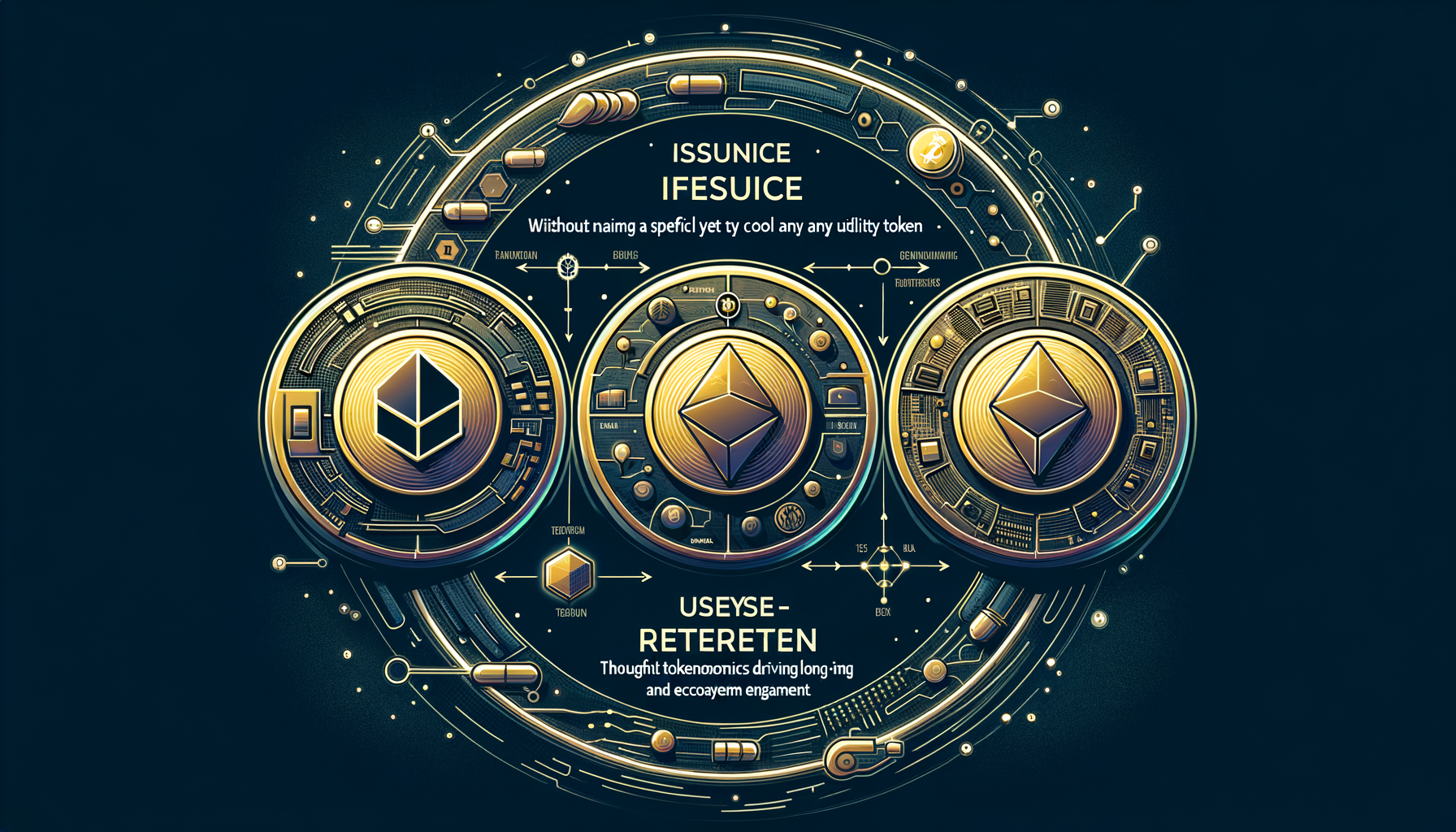The Lifecycle of a Utility Token: From Creation to Retirement
As Web3 technology continues to evolve, utility tokens have emerged as powerful tools within decentralized ecosystems—powering access, incentivization, and functionality across countless platforms. But what happens after a token is launched? What’s the journey from its creation to its eventual retirement and what does that mean for users, platforms, and communities?
In this in-depth guide, we’ll walk you through the three essential stages of a utility token’s lifecycle: Issue, Use, and Retire. Whether you’re a crypto newcomer, experienced trader, or simply exploring blockchain technology for the first time, this article is designed to give you the comprehensive overview you’re searching for, while also introducing LoopCoin ($LPC) as a real-world example of this lifecycle in action.
1. Issuing a Utility Token: The Genesis of the Ecosystem
The lifecycle of any utility token begins with its issuance. This pivotal phase involves creating the token on a blockchain, typically through a smart contract. Core aspects of the tokenomics—such as total supply, distribution model, and transfer mechanics—are also set during this stage.
Key Components of the Issuance Phase:
- Blockchain Selection: Choosing the foundational chain (e.g., Ethereum, Solana).
- Smart Contract Deployment: Creating immutable code that governs how the token operates.
- Token Distribution: Allocating tokens to early participants, treasury addresses, community pools, and ecosystems.
An example of a token that implements a well-thought-out issuance approach is LoopCoin (LPC), which launched on Solana with a fixed maximum supply of 1 billion tokens. This supply will deflate over time down to 25 million—mirroring Bitcoin’s ultimate scarcity model.
By integrating a microtransaction fee (0.05%) into every transfer, LoopCoin channels funds into a smart treasury that will later power programmatic buybacks and token burns. This mechanism is embedded into the issuance phase and sets the tone for its full lifecycle—an ingenious example of long-term vision in token design.
2. Using a Utility Token: Driving Ecosystem Engagement
Once a utility token is issued, its success—and longevity—are determined by how it’s used within its ecosystem. This is where utility tokens differ most from speculative assets: they’re designed to unlock functionality, offer value within platforms, and align user incentives with protocol goals.
Common Use Cases for Utility Tokens:
- Access: Unlock premium content, features, or tools ([e.g., LoopCoin grants access to memecoinAlerts tools](https://buyloopcoin.com/)).
- Governance: Holders vote on future changes to the protocol or community funds.
- Incentivization: Earn rewards or benefits for holding, staking, or active participation.
- Payments: Serve as digital currency for transactions within the platform.
- Verification: Authenticate user tiers and privileges through token balances.
LoopCoin implements real-world utility by serving as the native token for access to exclusive content and alerts via the memecoinAlerts platform—an ecosystem deeply embedded within the crypto and memecoin trading community. This utility is not just theoretical; it actively fuels demand and drives ongoing token circulation.
Curious how $LPC is being used in the wild?
Check out the current activity and trends on DexScreener for LoopCoin.
3. Retiring a Utility Token: Burn Mechanisms & Sustainable Scarcity
The final stage in a token’s lifecycle is retirement—a phase that centers around reducing (or “burning”) tokens from circulation. This mechanism is instrumental in creating scarcity, managing inflationary pressures, and rewarding long-term ecosystem engagement by preserving intrinsic value.
Token burning involves sending tokens to an inaccessible "burn" address—effectively removing them from supply forever. Burn strategies can be:
- Manual: Initiated by the development or treasury team as needed.
- Programmatic: Integrated directly into the protocol’s smart contracts to automate the process (e.g., LoopCoin’s weekly burn loop).
LoopCoin provides a cutting-edge example of a circular retirement economy. With every transaction contributing 0.05% to the treasury, these funds are used for strategic token buybacks. These bought-back tokens are burned weekly, permanently reducing supply and increasing scarcity. Designed to gradually reduce the total supply from 1B to just 25M tokens, this loop reinforces value alignment between users and the protocol.
Trade → Earn → Burn — that’s the Loop!
The Importance of a Full Lifecycle Strategy
Many tokens launch without a defined path beyond issuance. But sustainable, utility-driven tokens consider all lifecycle stages—ensuring that their economies are self-sustaining, valuable, and aligned with user needs.
From creation through to retirement, platforms like LoopCoin showcase how a carefully designed utility token can grow with its ecosystem, rewarding participation, promoting engagement, and creating scarcity through user-driven interactions.
Looking to participate in an ecosystem built for long-term value?
Explore LoopCoin ($LPC) today and join the loop that builds value through use, not hype.
Additional Resources
- Ethereum Token Standards (ERC-20, ERC-721)
- What Is Tokenization? — CoinDesk
- Official LoopCoin Website
- LoopCoin on X (Twitter)
- LoopCoin Telegram Community
Disclaimer:
(This content is provided for general informational and educational purposes only. It does not constitute financial, investment, legal, or tax advice, and should not be interpreted as a recommendation to buy, sell, or hold any digital asset, including LoopCoin ($LPC).
LoopCoin is a utility token intended to be used within its ecosystem to access services and platforms. It is not a security, and we make no claims, promises, or guarantees regarding its future value, performance, or appreciation.
All token-related mechanisms such as burning, treasury allocations, or buybacks are programmatic features of the LoopCoin ecosystem, designed to enhance utility—not promises of profit.
You are solely responsible for your interactions with digital assets. Please consult with a qualified professional before making any decisions involving cryptocurrency. Use of this website and its content is subject to our Terms of Use and Privacy Policy.
LoopCoin and its contributors disclaim all liability for any losses, damages, or actions resulting from your reliance on the content herein.)


